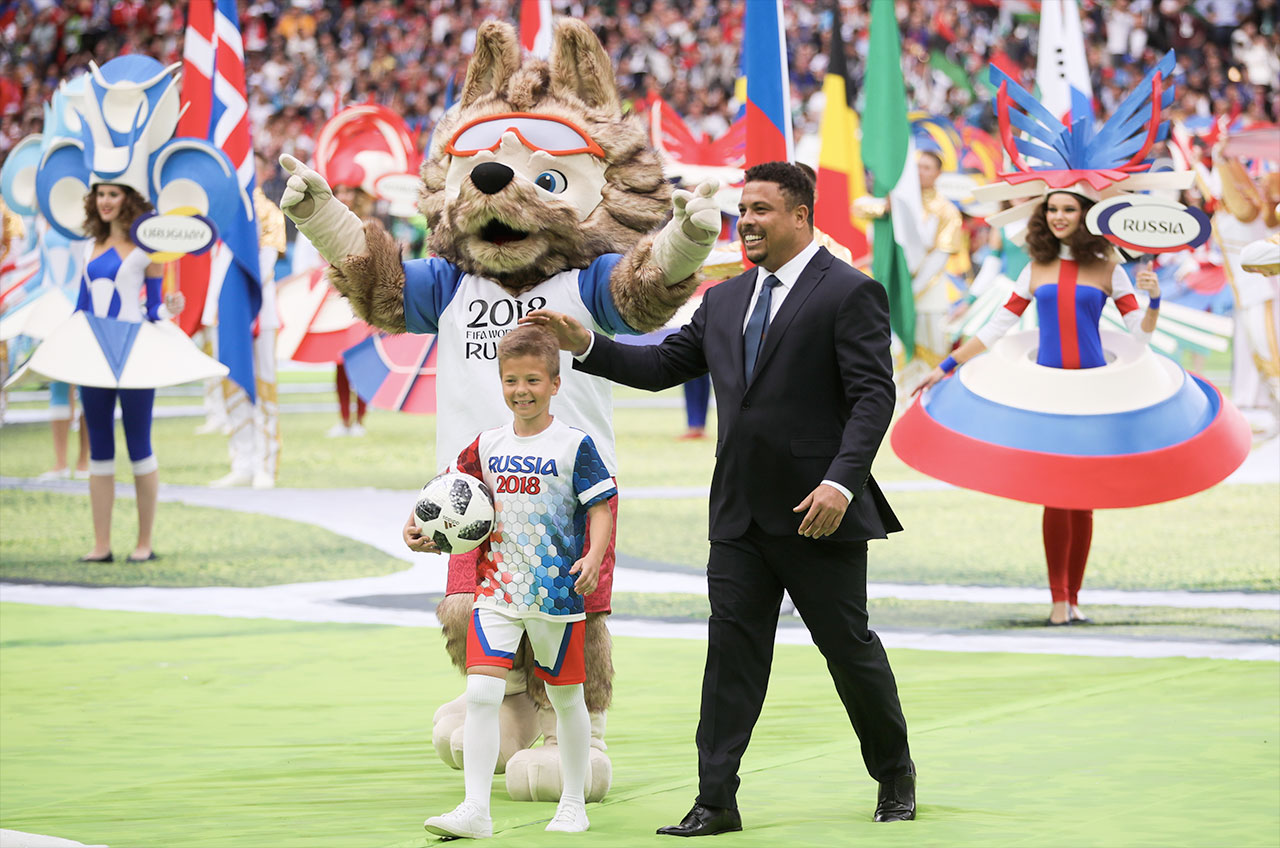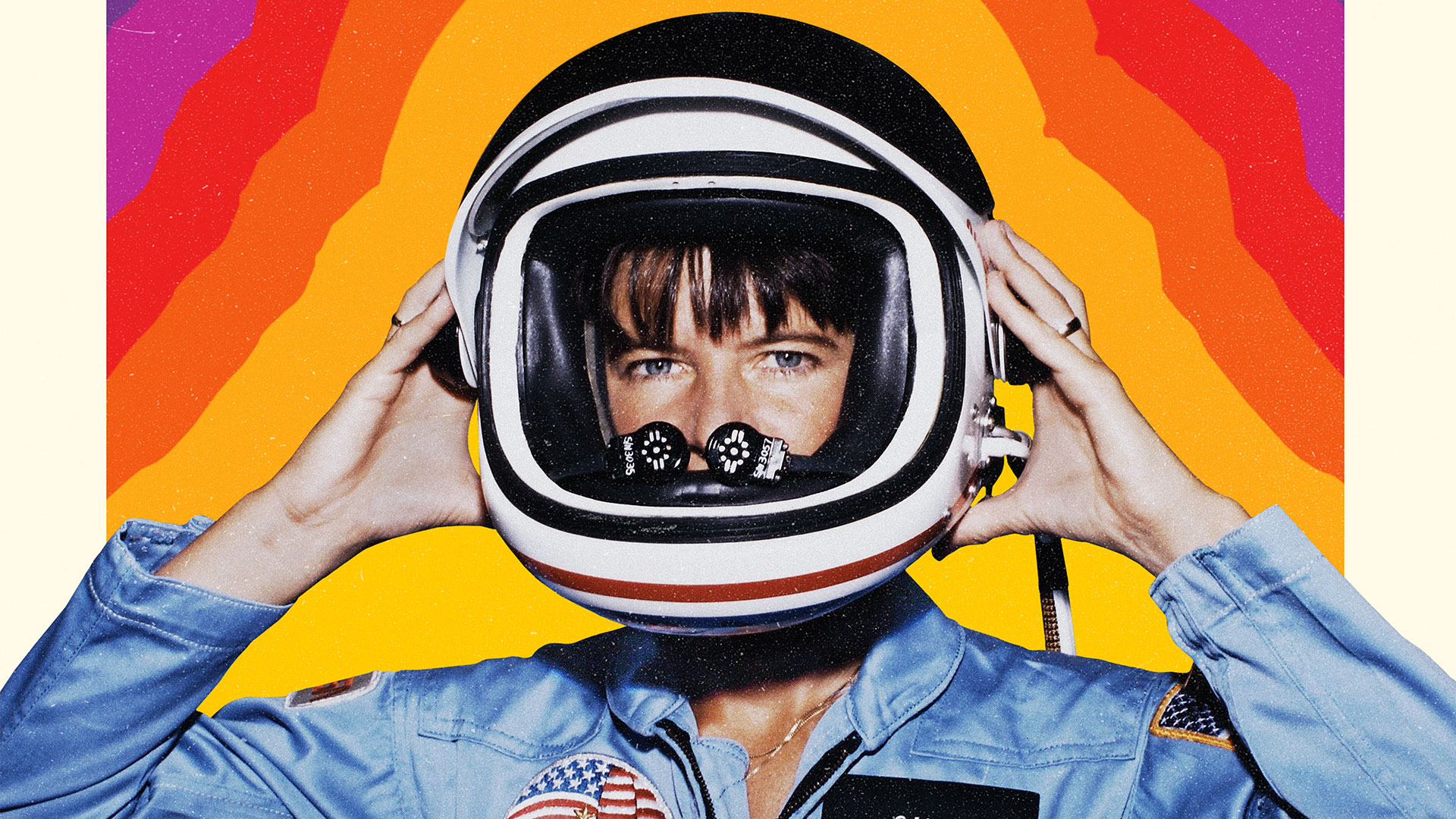Russia Kicks Off 2018 FIFA World Cup with Space-Flown Soccer Ball

A soccer ball that was both named after a historic satellite and launched into Earth orbit was used to kick off the 2018 FIFA World Cup in Russia on Thursday (June 14).
The Adidas Telstar 18 soccer ball (or if you prefer, football) first spent time aboard the International Space Station before arriving at Luzhniki Stadium in Moscow for the opening match between Russia and Saudi Arabia.
World Cup ambassador Victoria Lopyreva carried the space-flown ball out onto the pitch and presented it to famed Brazilian striker Ronaldo for the first kick. He faked his approach though, leaving an opening for an unidentified young boy to pass the ball to Zabivaka, the official wolf mascot of this year's international competition. [Watch Cosmonauts Play Soccer in Space to Celebrate 2018 World Cup]
The World Cup ceremony began on Thursday with a video showing a similar ball floating outside the space station. The scene was simulated, but in a coincidence of timing, it played as two NASA astronauts performed a spacewalk outside of the real orbiting complex.
Orbital pass
"We follow the 2018 FIFA World Cup from the International Space Station!" wrote Russian cosmonaut Oleg Artemyev, using Twitter from on board the orbital outpost after his country's team was already on the way to winning the first game.
Although he was some 250 miles (400 kilometers) above the planet, Artemyev had a hand in Thursday's ceremony, having launched to space with the opening match ball on March 21. He also flew the first of two Zabivaka plush dolls used as "zero-g indicators" on the way to the station.
Artemyev and fellow Roscosmos cosmonaut Anton Shkaplerov used the ball (one of at least two flown to the space station) to demonstrate their zero-g soccer skills, filming themselves as performed flips and kicks otherwise impossible on Earth.
Breaking space news, the latest updates on rocket launches, skywatching events and more!
The members of the space station's Expedition 55 crew each autographed the ball and it was stamped with ink markers only found aboard the outpost, certifying it as flown in orbit.
Shkaplerov then brought the well-traveled ball back to Earth, landing with it aboard the Soyuz MS-07 spacecraft on the steppe of Kazakhstan on June 3. In total, the ball orbited the planet for 74 days, traveling more than 31 million miles (50 million kilometers).
On Thursday, Shkaplerov was in the stands at Luzhniki Stadium to see the ball be used and cheer on his country's team.
"We are rooting for our people!" tweeted Shkaplerov (translated from Russian).

Telstar 18
Even before it left Earth, the Adidas Telstar 18 soccer ball had a space legacy.
The 2018 FIFA World Cup official match ball was named "Telstar 18" to pay tribute to Adidas's first World Cup ball that dates back to 1970. That year marked the first time that the competition was broadcast live around the world and Adidas sought a ball that would stand out on both black and white and color television screens.
The company's answer was to design the Telstar, the now iconic ball with 12 black pentagonal and 20 white hexagonal panels.
The Telstar soccer ball was named after the first Telstar communications satellite, which enabled the first live transatlantic television feed after being launched in July 1962 by NASA and AT&T.
Telstar 1, which today is inactive but still in Earth orbit, had a spherical white body mounted with dark-colored solar panels, such that it resembled the soccer ball that came to use its name.

World Cup cosmonautics
The World Cup's connections to space, though, go beyond its official match ball.
In 2014, Roscosmos cosmonauts Maksim Surayev, Aleksandr Samokutyayev and Yelena Serova helped to reveal the official logo for the 2018 competition. The logo uses space as a theme to emphasize Russia's pioneering achievements.
"Seeing the football World Cup in our country was a dream for all of us," remarked Serova from aboard the International Space Station at the time.
Russia's 2018 World Cup ambassadors, individuals chosen to represent the nation during the month-long sports event, include former cosmonaut Sergei Krikalev, a veteran of six spaceflights who logged more than 800 days in space
And aboard the space station, Artemyev and his crewmates plan to mark the final World Cup game by staging their own orbital match. The crew, which includes two Russians and three Americans, will play a round of soccer while taking care not to break anything inside the one-of-a-kind laboratory. The game is slated to occur on July 15, the last day of the 2018 FIFA World Cup.
Follow collectSPACE.com on Facebook and on Twitter at @collectSPACE. Copyright 2018 collectSPACE.com. All rights reserved.
Join our Space Forums to keep talking space on the latest missions, night sky and more! And if you have a news tip, correction or comment, let us know at: community@space.com.

Robert Pearlman is a space historian, journalist and the founder and editor of collectSPACE.com, a daily news publication and community devoted to space history with a particular focus on how and where space exploration intersects with pop culture. Pearlman is also a contributing writer for Space.com and co-author of "Space Stations: The Art, Science, and Reality of Working in Space” published by Smithsonian Books in 2018.In 2009, he was inducted into the U.S. Space Camp Hall of Fame in Huntsville, Alabama. In 2021, he was honored by the American Astronautical Society with the Ordway Award for Sustained Excellence in Spaceflight History. In 2023, the National Space Club Florida Committee recognized Pearlman with the Kolcum News and Communications Award for excellence in telling the space story along the Space Coast and throughout the world.

